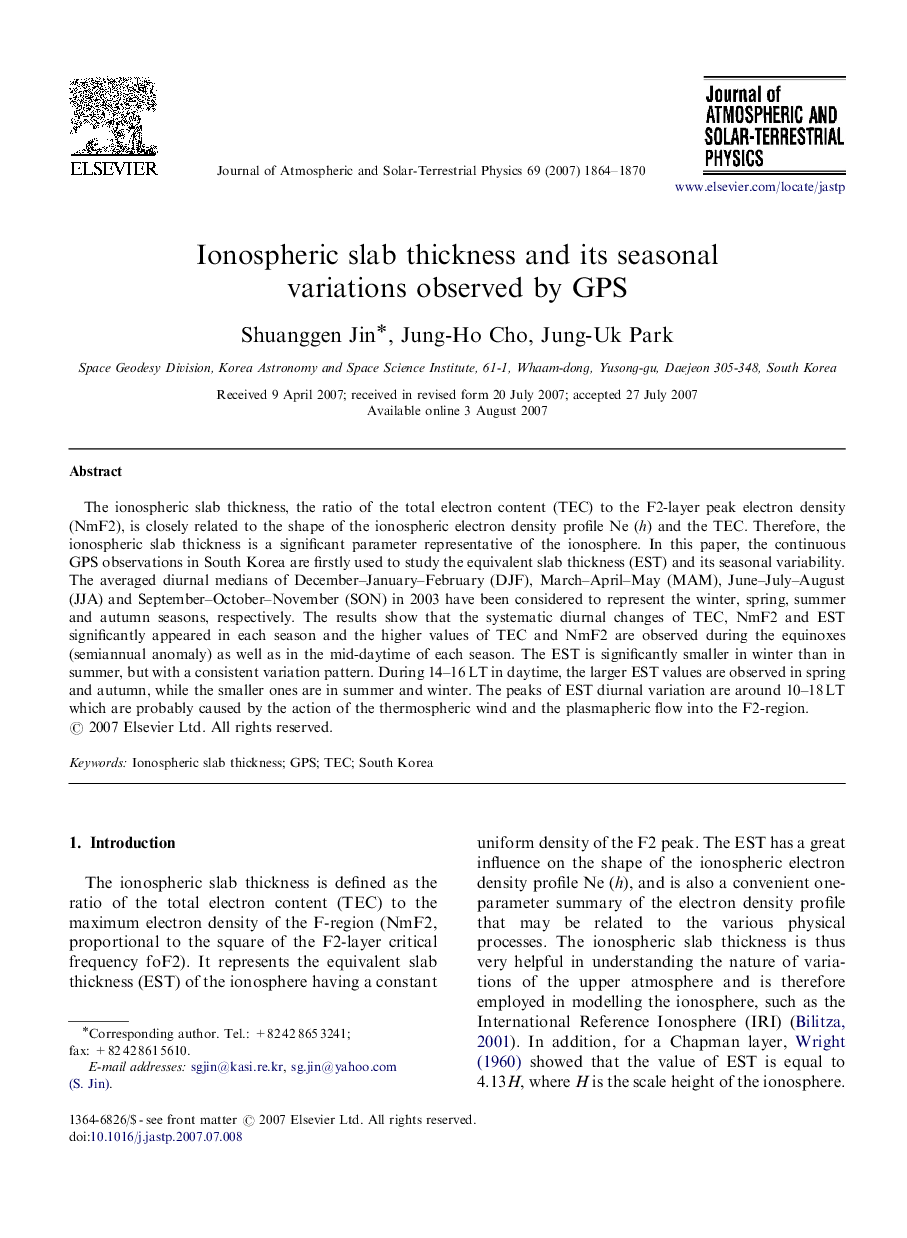| Article ID | Journal | Published Year | Pages | File Type |
|---|---|---|---|---|
| 1777975 | Journal of Atmospheric and Solar-Terrestrial Physics | 2007 | 7 Pages |
Abstract
The ionospheric slab thickness, the ratio of the total electron content (TEC) to the F2-layer peak electron density (NmF2), is closely related to the shape of the ionospheric electron density profile Ne (h) and the TEC. Therefore, the ionospheric slab thickness is a significant parameter representative of the ionosphere. In this paper, the continuous GPS observations in South Korea are firstly used to study the equivalent slab thickness (EST) and its seasonal variability. The averaged diurnal medians of December-January-February (DJF), March-April-May (MAM), June-July-August (JJA) and September-October-November (SON) in 2003 have been considered to represent the winter, spring, summer and autumn seasons, respectively. The results show that the systematic diurnal changes of TEC, NmF2 and EST significantly appeared in each season and the higher values of TEC and NmF2 are observed during the equinoxes (semiannual anomaly) as well as in the mid-daytime of each season. The EST is significantly smaller in winter than in summer, but with a consistent variation pattern. During 14-16Â LT in daytime, the larger EST values are observed in spring and autumn, while the smaller ones are in summer and winter. The peaks of EST diurnal variation are around 10-18Â LT which are probably caused by the action of the thermospheric wind and the plasmapheric flow into the F2-region.
Keywords
Related Topics
Physical Sciences and Engineering
Earth and Planetary Sciences
Geophysics
Authors
Shuanggen Jin, Jung-Ho Cho, Jung-Uk Park,
